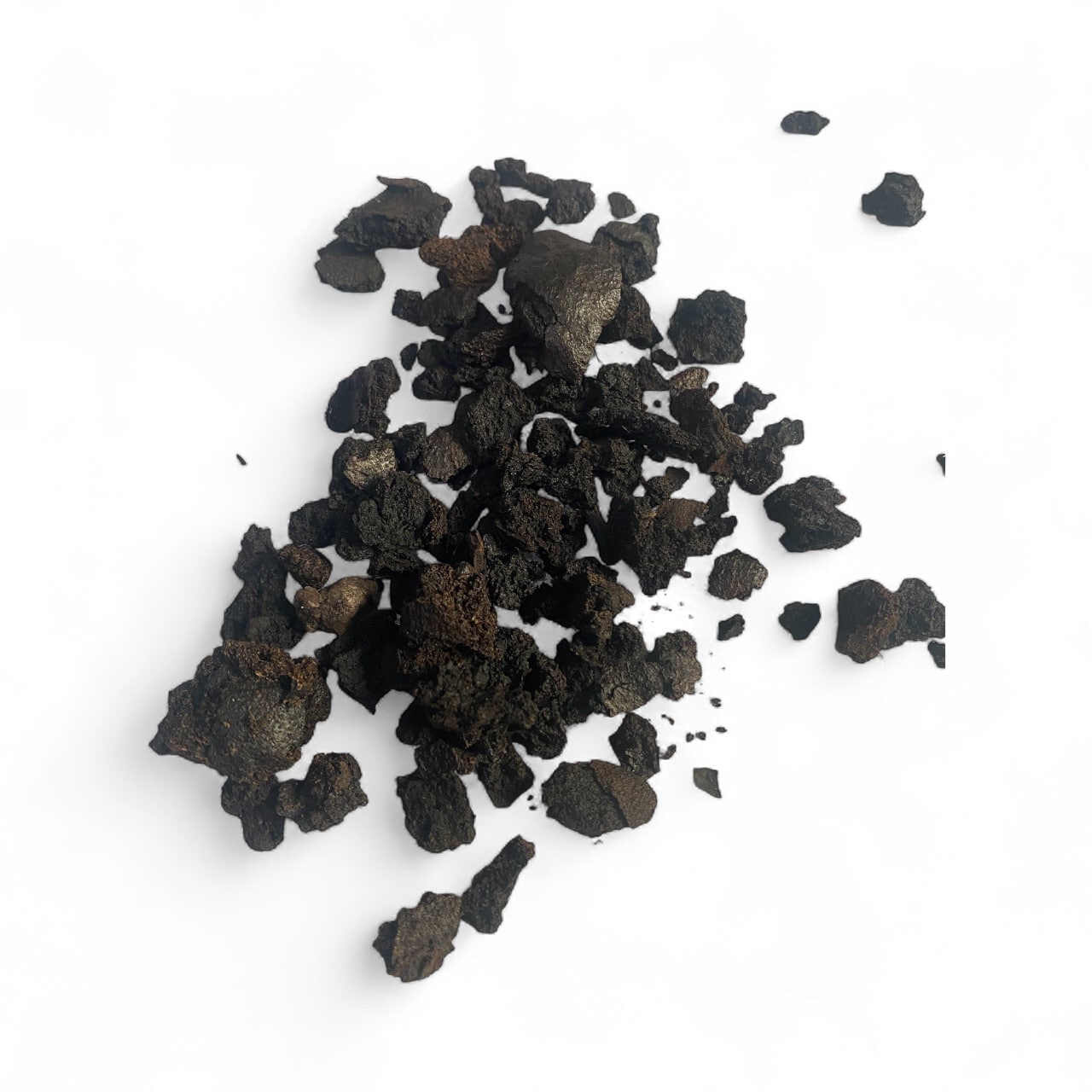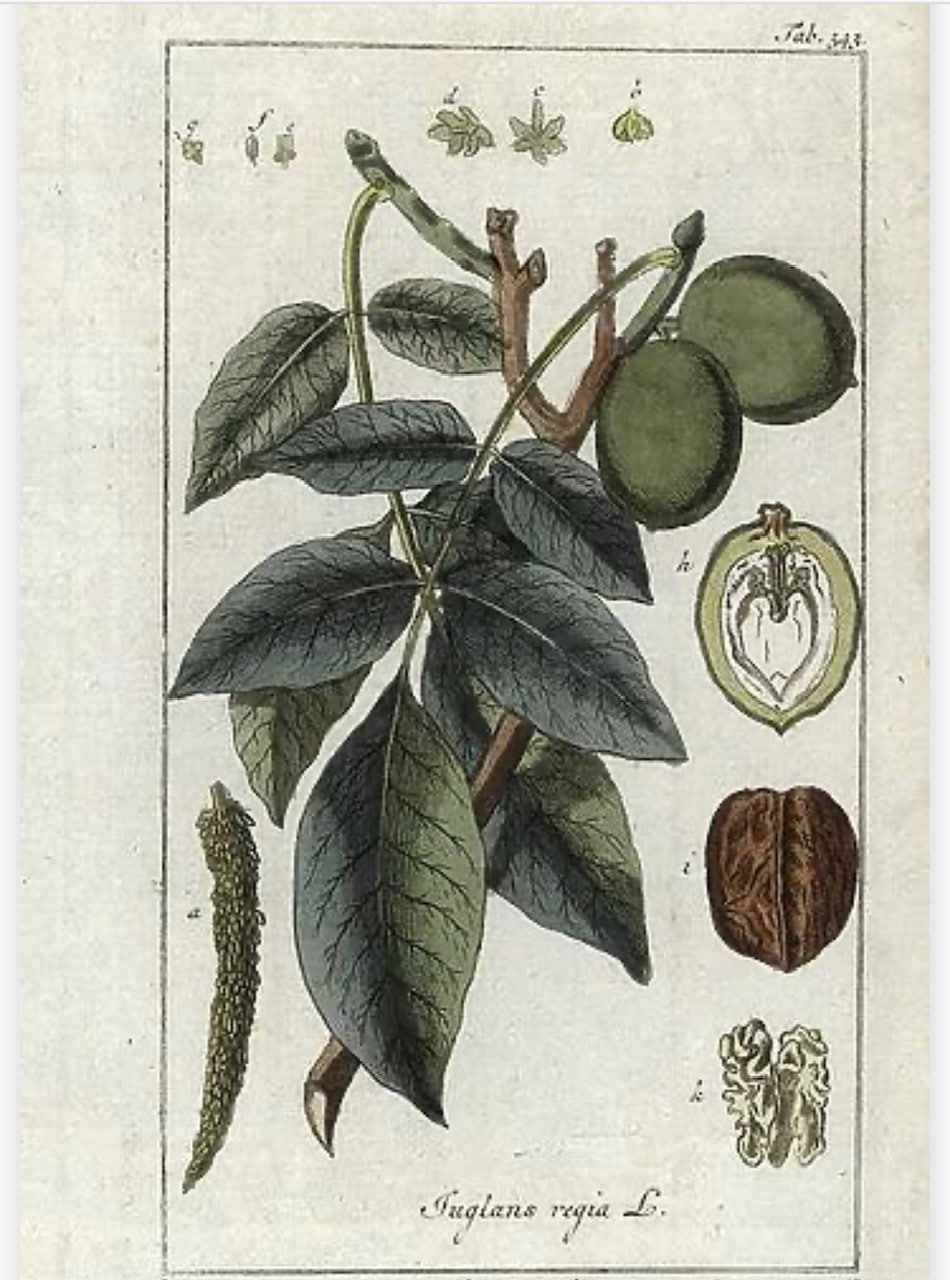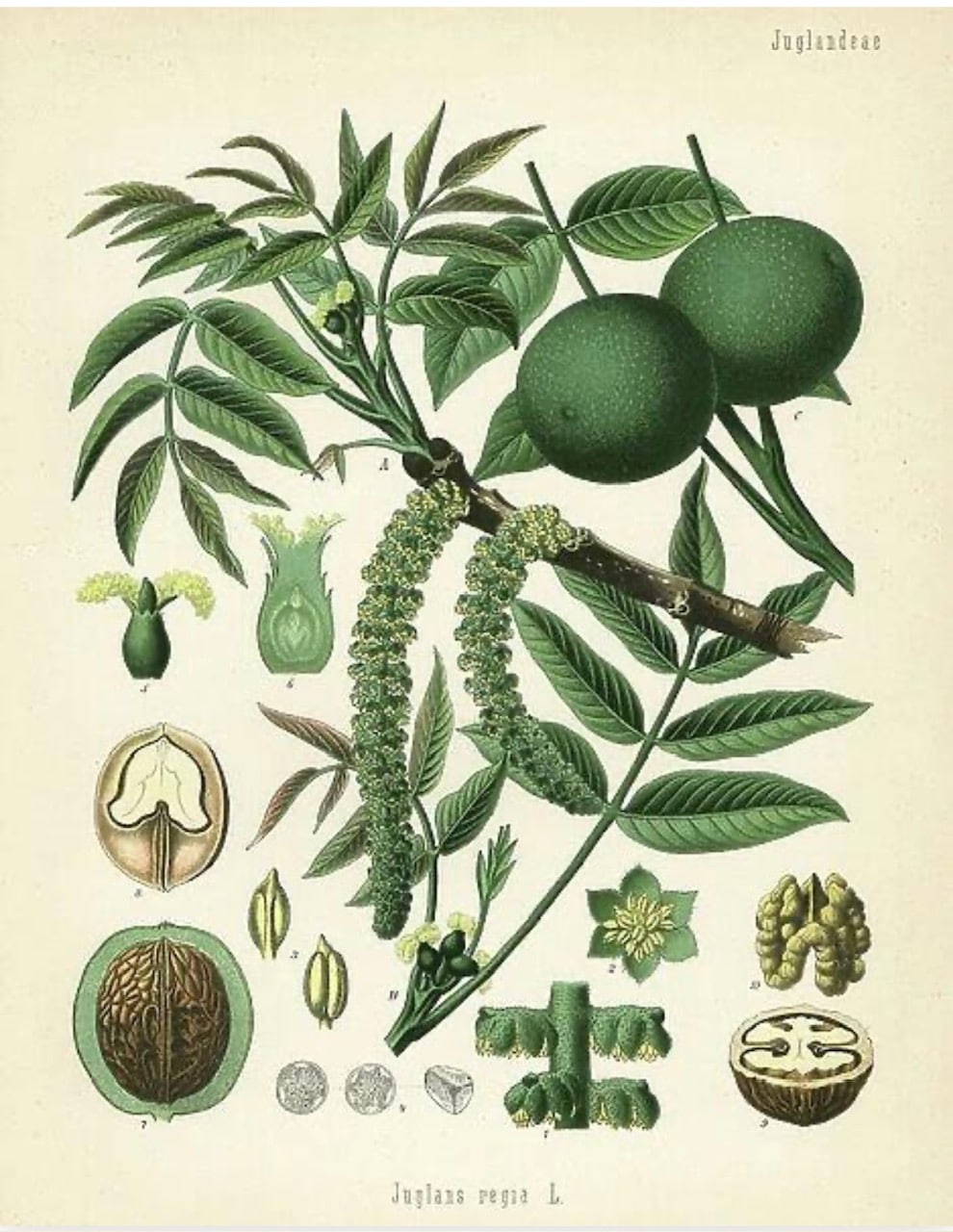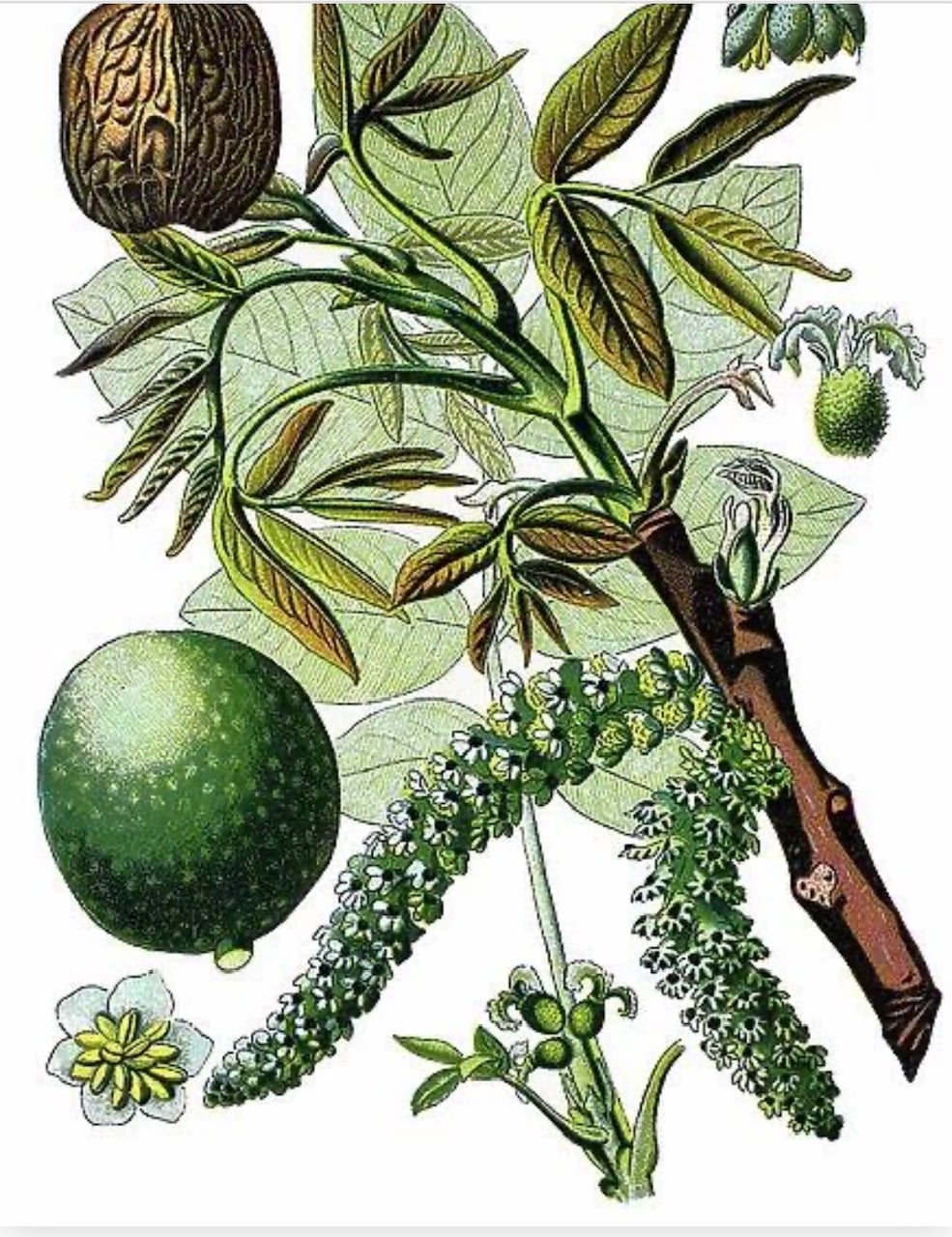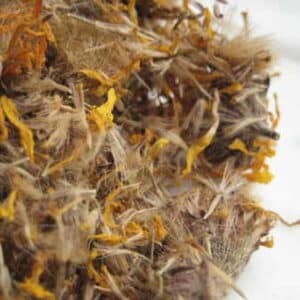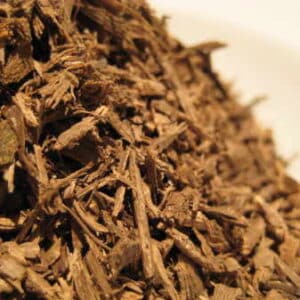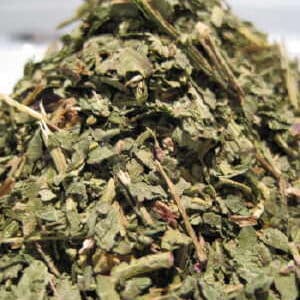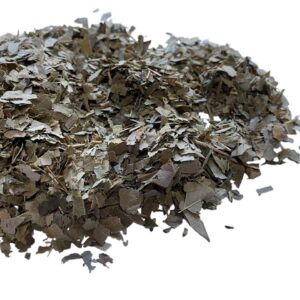Black Walnut Hulls/Husks – Juglans nigra
£6.50
Black Walnut Hulls/Husks
Juglans nigra
50 grams
What’s the difference between Black Walnut Shells and Black Walnut Hulls/Husks?
Hulls/Husks are the outer coating of the developed walnut which is green when growing and black when processed. Shells are the darkish brown hard coating of the ripe nut that you crack to expose the nut when preparing to eat them.
Black Walnut Hulls/Husks (Juglans nigra) from the black walnut tree have been used from ancient times and through the nineteenth century herbalists prescribed the walnut, the bark, hulls, shells, roots, and the leaf as an astringent, a laxative, a purgative to induce vomiting, a styptic to stop bleeding, a vermifuge to expel worms or parasites, and a hepatic to tone the liver. They are dried for herbalist and dye use as all our stock is and are brown. Green Walnuts are fresh. We do not sell fresh walnuts.
Technically a Walnut is a nut from any tree in the genus Juglans. The English Walnut is Juglans regia and sometimes called the Persian Walnut (as that is where it originated) Both the Black and English walnut trees provide herbal material but the black walnut is more popular.
Traditional Uses for Black Walnut Hulls/Husks:-
The walnut serves to induce sweating, stop diarrhoea, soothe sore gums and skin diseases, calm herpes, and relieve inflamed tonsils.
The nut itself was used to prevent weight gain, calm hysteria, eliminate morning sickness, and to strengthen one’s constitution. The shell of which can be used as a dye.
The shells and hulls were boiled and used to treat head and body lice, herpes, intestinal parasites and worms, skin diseases, and liver ailments. The fruit-husk or hull was chewed for colic, the juice used on ringworm and poulticed for inflammation.
The leaf was decocted to cure boils, eczema, hives, ulcers, and sores.
Even the walnut oil was employed as a medicinal aid. It was first diluted before it was used to treat colic, dandruff, dry hair, gangrene, and open wounds, while the green rind of the walnut was used to treat ringworm.
The juice of the green husk/hull was boiled with honey and used as a gargle for sore mouth and throat and to relieve heat and inflammation in the throat and stomach.
The husk/hull, shell and peel are sudorific, especially if used when the Walnuts are green. Whilst unripe, the nut has worm destroying virtues.
The husks/hulls and leaves, macerated in warm water impart to it an intense bitterness, which will destroy all worms (if the liquid be poured on to lawns and grass walks) without injuring the grass itself.
The juice of the green husks/hulls, boiled with honey, is also a good gargle for a sore mouth and inflamed throat, and the distilled water of the green husks/hulls is good for quinsy and as an application for wounds and internally is a cooling drink in agues.
Constituents of Black Walnut Hulls/Husks:-
The compound, juglone, isolated from black walnut, has been shown to be a laxative, fight worms, and have strong activity against bacteria and abnormal growths. Dr. James Duke recommends eating walnuts for treating various glandular disorders including thyroid problems and notes that studies showing that the fresh juice of green walnuts made by boiling them for about 20 minutes, boosted thyroxine at least 30 percent.
| Country of Origin | UK |
|---|---|
| Batch Code | JF366974A |
| Harvest | October 2024 |
| Best Before | March 2027 |
